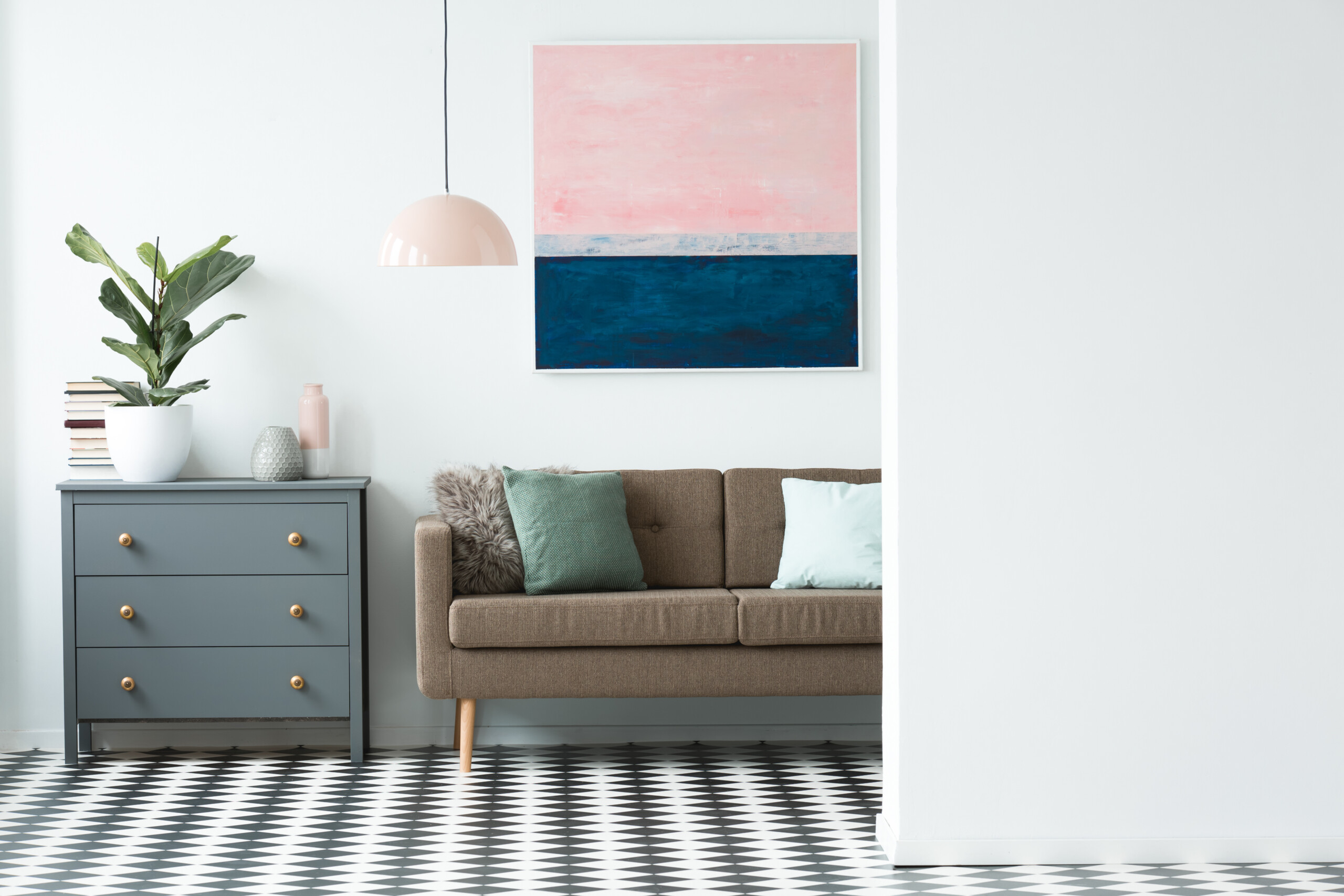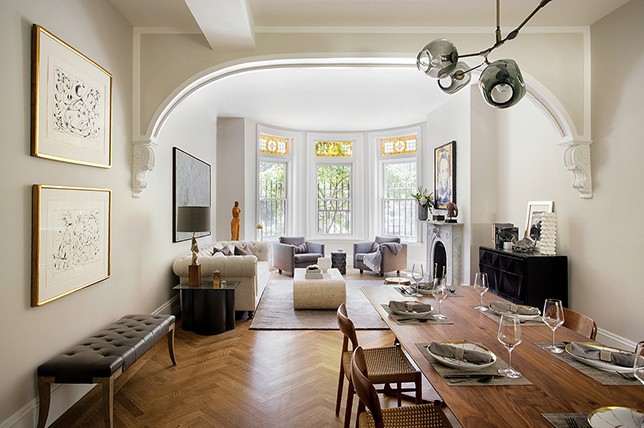
If you’re a novice looking to upgrade your homes interior design but don’t know where to start, or which design style is right for you, we’ve created a series of guides breaking down each style and what it takes to get it right. When looking to create a diverse, studied mix of era’s and elements in your home, any interior design will suggest transitional style as a go-to options to consider. But what does transitional home decor really mean, and what are the best routes to make it work for you?
To get you inspired and on your way to creating an environment exclusive to you (part of the true joy of transitional interior design as no room will ever look alike), we’re looking at the essence and essentials of the design style to get you started with confidence.
WHAT DOES TRANSITIONAL STYLE MEAN?
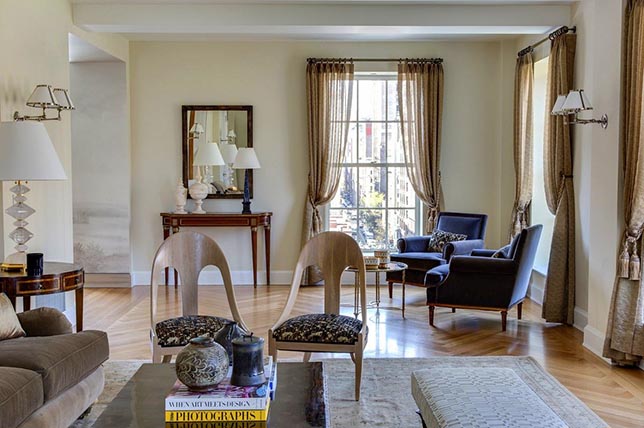
Transitional style refers to a mix of traditional and modern furnishings, fabrications, and decorative features that lend you more freedom when looking to decorate your home with ease as there’s no end to the directions you can take the design style. In essence, transitional home decor is the combination of various design styles brought together simultaneously to create a cohesive design in one room.
Though the mix of furnishings at first seems disparate, the key to mastering transitional decorating style is to find a path that makes everything seem to work with each other while representing you and your lifestyle.
Think a restful and serene transitional living room that features a thoughtful mix of contemporary, modern, and even antique furnishings with punchy flourishes that together evoke the art of brilliant combinations.
WHY YOU’LL LOVE TRANSITIONAL STYLE?
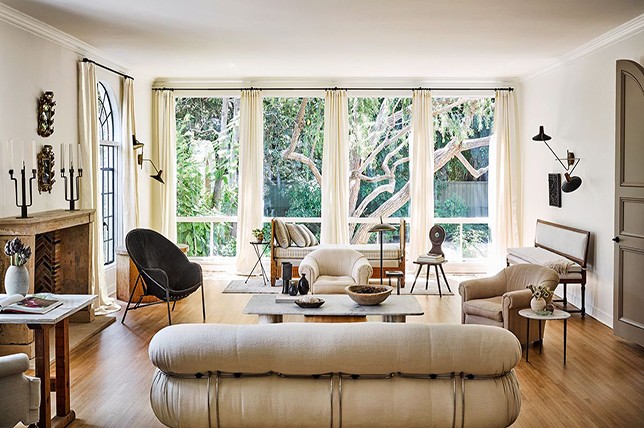
- Transitional style is great for those who aren’t interested in locking the aesthetics of their home interior design down to one set era or design style.
- There’s more freedom to be found with transitional home decor as you can experiment until the mix feels right for you.
- In general, transitional decorating style tends to often be easier as you can be as expressive as you like while creating a home that’s representative of your tastes and completely unique to you as no transitional home will ever look the same.
- When done well, you’ll find that the heady mix you’ve created for your transitional living room is certain to create conversations long after guests have left as this is one impression making design style certain to get their attention.
BUT OF COURSE, THERE ARE CHALLENGES
When it comes to perfecting such a heady and visually striking and unique mix, issues are certain to arise when looking to make everything work together while evoking true transitional style.
- Scale is crucial in getting right. The key here is to keep most of the furnishings and accessories in a room relatively the same size – save for a couple of oversized focal points. These include main tables like a coffee table or dining room table, sofas, chairs, and artwork for the walls.
- Color and fabrication are another often perplexing issue. Too many colors and patterns in a room competing with one another and the eye won’t know where to focus. While too much commonality will make everything blend in together all too well. The key here is to be varied and look for common denominators that will make everything work together seamlessly without being too similar.
- Another issue lies in the mix of assorted eras and design styles that transitional home decor calls for. To make everything work, Décor Aid interior designers suggest sticking to a handful of elements so everything doesn’t compete with one another or come off as entirely random. That said, we suggest sticking to only 3-4 different themes and common elements to keep everything feeling unified no matter how diverse they are.
HOW DO YOU CREATE TRANSITIONAL STYLE?
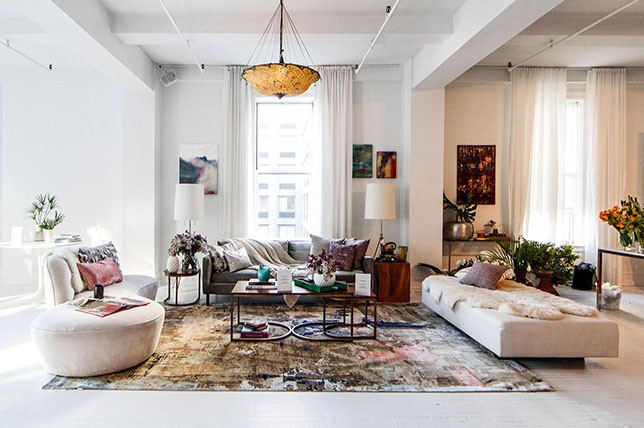
Here’s everything you need to know to master transitional interior design for your home effortlessly:
- Transitional home decor is all about a rich balance of design styles and elements brought together by classic lines juxtaposed with hues and furnishings that are more modern in spirit.
- To emphasize the mix, bring in decorative extras that are full of life and history to create a somewhat off-kilter assortment of surprises and talking points.
- In a transitional living room, marry traditional and contemporary style furnishings, finishes, materials, and fabrications to home in on simple yet sophisticated, classic, timeless design albeit with a decidedly harmonious, unexpected sense of play.
TRANSITIONAL STYLE COLORS

When it comes to transitional interior design colorways, it all depends on the mood you’re looking to create from room to room. For a subtle take on transitional decorating style, go tonal and introduce an array of four to five tones of the same shade or go dramatic with dark, moody hues but stick to the same idea of a range of hues to keep everything consistent.
We admire how the transitional living room in New York City featured above has an almost non-color gray that bounces off light while echoing the upholstery of the sofa and chairs while working as a neutral foundation for the many statement-making furnishings in the room, as the hue pushes the eye to move around the room rather than remaining locked on one single element.
TRANSITIONAL STYLE FURNITURE
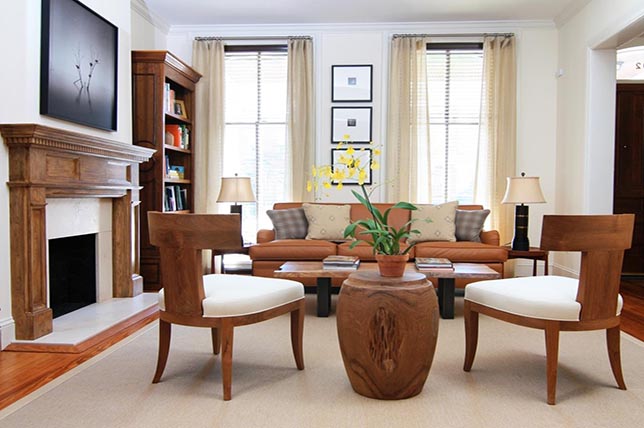
Since transitional interior design is all about unexpected yet carefully coordinated mixes, go for simple silhouettes counterbalanced by nuanced, abstract, and rounded elements to keep the eye moving around the room.
For a smart transitional living room, we admire how the inspiration above keeps everything in a strict almost two-tone color palette for the ultimate in balance, while there’s a quiet play on rounded and rigid silhouettes competing with each other that’s so quiet you almost don’t notice.
And that’s a key element for any well-realized transitional style home as every element should stand on its own while together creating a rich assortment of goods that brilliantly work together.
TRANSITIONAL STYLE TEXTILES

When it comes transitional interior design textiles, the sky’s the limit when creating an assortment of complimentary fabrications. Think a transitional style home boasting textural, plush, and varied textiles yet keep each rooms look grounded with subtle coordination as the key here is to never let a single piece look random – everything should have a rhyme and a reason.
Take a cue from the transitional living room featured above and keep textiles limited to a range of four to five complimentary shades in different patterns for the ultimate sense of visual play.
TRANSITIONAL STYLE ACCESSORIES

Like with almost any design style, transitional interior design allows you to champion era’s and moments in small doses with stunning accessories to create a rich, and layered mix.
When decorating a transitional living room, bring it to life with a limitless collection brimming with indulgent pieces culled from a variety of sources high and low to create an environment chock full of playful conversation starters. In general, any transitional style home should boast a selection of extra’s that are full of personality and visual appeal while bringing you joy with the thrill of the hunt.
TRANSITIONAL STYLE WINDOW TREATMENTS
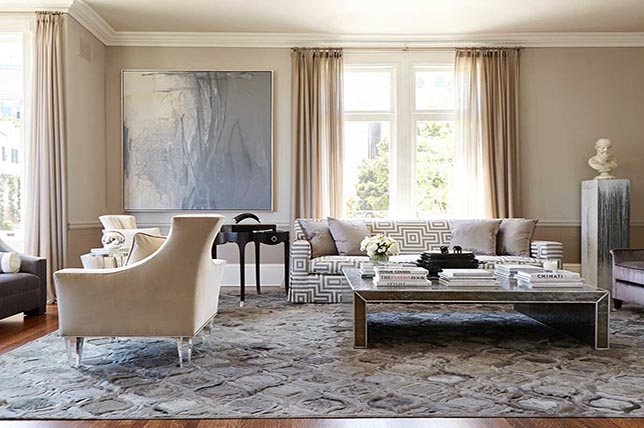
For window treatments throughout your home opt for crisp, classic drapes that are paired down and boast a solid, tonal color to pull the various elements you introduce from room to room together.
Often, transitional interior design tends to celebrate the whimsical and the ornate, but when it comes to window treatments, go for solid, straight lines that are fuss-free and timeless. To top off a transitional living room, our Décor Aid interior designers tend to suggest adding a note of drama with sheer white curtains finished with a tonal embroidered boxed valance for a pulled together, more formal vibe.
TRANSITIONAL DECORATING STYLE ROOM BY ROOM
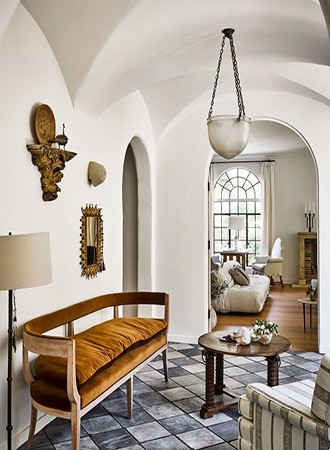
Now that we’ve defined what makes for a traditional style home, here’s everything you need for transitional style interior design ideas throughout your home.
Transitional Kitchen

For your kitchen, think a playful mix of vintage, antique, and contemporary dishes and appliances grounded by cabinetry boasting clean handsome lines and calming colors paired against classic flooring.
Seating selections and decorative yet practical extra’s like dish and cookware are where you can introduce competing design styles that work together rather than create a hectic clash. Think a vintage breakfast table and stools that evoke another era yet work in your kitchen due to your attention to scale and complementary hues and fabrications.
Transitional Dining Room

For this room, its all about a substantial table that works as a foundation for what’s to come. And since a formal dining room in any transitionally styled home should take on a regal air, go for a dramatic find for an elegant statement that is sure to never go out of style.
Again, note how the room above features varied seating that’s tied together with coordinating upholstery that echoes the French blue painted shutters and floor, while an antique console and oversized mirror add another irresistible element of a clashing design style that lends the room a polished, grown-up sense of sophisticated drama with ease.
Transitional Style Living Room

Like we said before, a transitional style home is all about a beautifully orchestrated, layered mix. For your living room, the options are endless. Think whimsical chairs, mismatched prints, expressive art pieces varied in scale, cultural references, juxtaposed era’s and styles, and sculptural elements throughout.
The trick here is to use a light, studied hand to keep the heady mix balanced and in sync with one another. Another key element is to keep furnishings similar in scale for harmony as each chair and table featured above are of the same dimensions so they don’t compete with each other or appear coming off as random one-offs.
Transitional Style Bedroom

For a bedroom, take cues from our living room suggestions and add a unique statement-making mirror along with a headboard or bed platform that smartly doubles as a source of extra privacy and a grand gesture like illustrated above.
Note how there’s a subtle mix of design styles throughout the room that quietly play off each other in soothing complementary hues that add a polished and considered charm to an otherwise standard, if not generously proportioned room. Here the canopy and window drapes echo off each other for balance while a tight colorway of blues, mint, and cream keep everything grounded and soothing.

